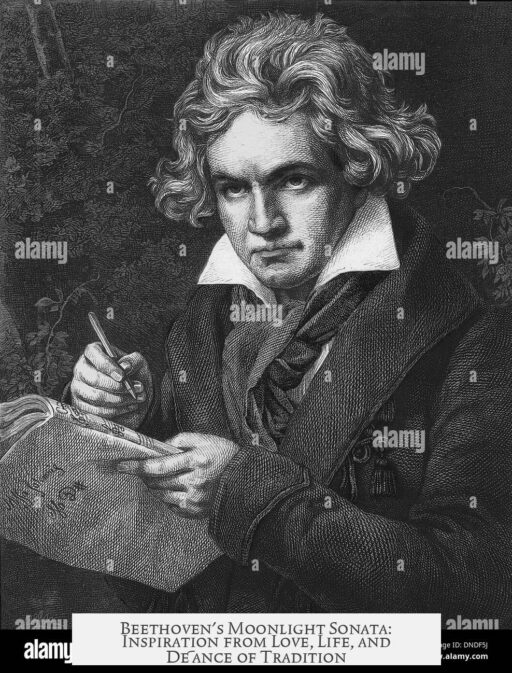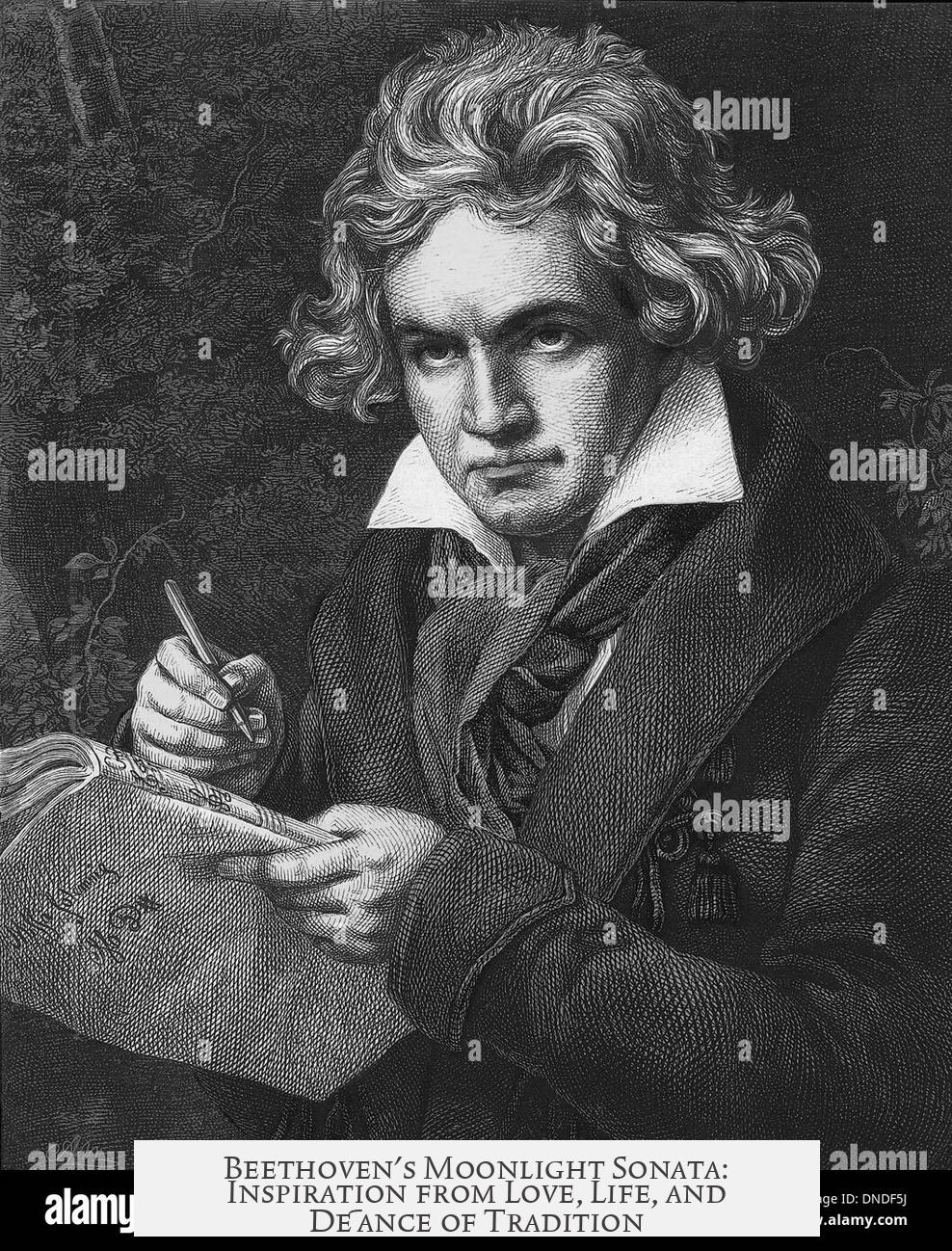Beethoven’s inspiration for writing the Moonlight Sonata, officially named Piano Sonata No. 14 in C-sharp minor “Quasi una fantasia,” did not stem from a singular romantic event or dramatic life crisis but rather from a mix of musical innovation and personal connections. The famous title “Moonlight Sonata” was not Beethoven’s own, but a later addition by music critic Ludwig Rellstab, who likened the first movement’s mood to moonlight reflecting on a lake.
Beethoven deliberately labeled the sonata “quasi una fantasia,” signaling his departure from traditional sonata form. This indicated a freer, less structured approach emphasizing mood and atmosphere over strict classical form. He included unusual performance instructions, such as playing the damper pedal to create resonance, a technique not commonly indicated in sonata scores of the time. This reveals Beethoven’s desire to innovate and experiment with the piano sonata genre.
The sonata’s dedication adds another layer to its background. Beethoven dedicated it to Julie Guicciardi, a 16-year-old Austrian countess and one of his piano students. Beethoven admired Julie and possibly harbored feelings for her, as suggested in his letters describing a “sweet, enchanting girl” who loved him. Despite this affection, he recognized the social gap between a noblewoman and himself, a common barrier in 18th- and 19th-century Europe.
There is speculation about whether Beethoven’s feelings for Julie inspired the sonata. Some sources, including Beethoven’s secretary Anton Schindler, claimed Beethoven was deeply in love and even wrote a passionate letter to her called the “Immortal Beloved” letter. However, scholars consider Schindler’s writings unreliable, and the letter was discovered among Beethoven’s papers roughly a decade after the sonata’s dedication. Thus, it is unlikely the romantic story behind Julie directly fueled the composition.
Beethoven’s relationship with Julie was likely complex but not the clear case of unrequited love or heartbreak often portrayed. Julie later became engaged to a younger count, reducing the chances that Beethoven’s feelings influenced the sonata as a tragic farewell. Furthermore, Beethoven reportedly intended to dedicate another piece to her but had committed that work to someone else, leading to the sonata dedication as a form of recognition rather than a romantic gift.
Besides Julie, Beethoven had other noble acquaintances and possible romantic interests, including Josephine Brunsvik, Julie’s cousin. Beethoven and Josephine maintained contact and exchanged letters. Yet, none of these relationships definitively explain the sonata’s creation or mood.
Concurrently, Beethoven’s life was in a period of professional promise. He was producing acclaimed compositions, performing widely, and securing his career’s foundation. His work was in demand, indicating personal satisfaction and creative momentum rather than despair or emotional turmoil.
A key point in Beethoven’s personal life was the early onset of hearing loss, which began to trouble him around the time he composed the sonata. Though significant later, this development does not seem to have directly inspired the Moonlight Sonata. Beethoven’s famous “Heiligenstadt Testament,” a letter expressing his suffering over hearing loss and contemplation of suicide, was written several years after the sonata’s creation. Thus, the sonata is unlikely to reflect this darker emotional state.
In synthesis, the Moonlight Sonata emerged from Beethoven’s urge to innovate sonata form combined with his social and emotional environment. It is a subtle blend of artistic experimentation and mild romantic association, rather than a product of acute heartbreak or tragedy. The romantic title and narrative were largely superimposed later by listeners and critics fascinated with Beethoven’s mystique.
- The “Moonlight” title was coined posthumously; Beethoven never named it so.
- Beethoven’s “quasi una fantasia” label indicates a break from traditional sonata structure.
- The sonata was dedicated to Julie Guicciardi, a young countess and Beethoven’s piano student.
- Speculation about romantic inspiration is largely based on unreliable or later-added stories.
- Beethoven’s early hearing loss occurred after the sonata’s composition, unlikely influencing it directly.
- His career was flourishing when he wrote the sonata, reflecting creative confidence.
What Inspired Beethoven to Write Moonlight Sonata?
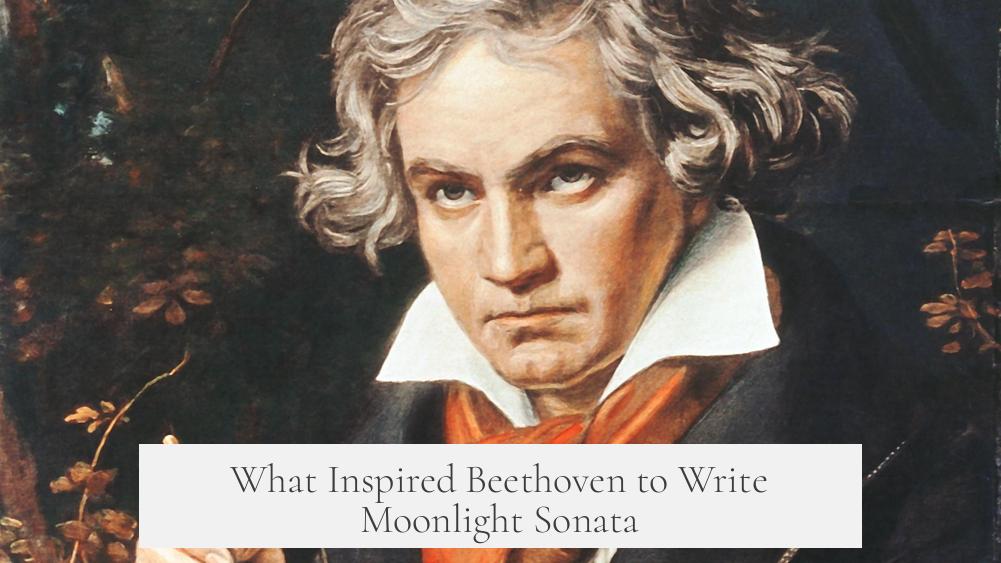
Beethoven’s inspiration for the Moonlight Sonata wasn’t a single clear-cut story, but a blend of musical innovation, personal connections, and his unique artistic spirit. Let’s dive deep into this iconic masterpiece’s backstory, peeling away myths and uncovering the fascinating facts behind its creation.
The Misleading Moonlight Name
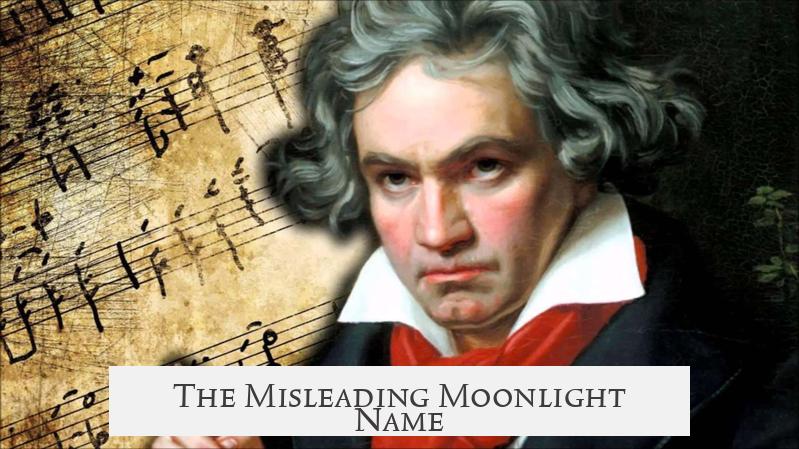
First things first, the name “Moonlight Sonata” is a total posthumous invention. Beethoven himself never labeled it that way. Nope, no moon, no sonata under silver light from the guy who actually wrote it.
It wasn’t until years after Beethoven passed away that Ludwig Rellstab, a music critic with a poetic streak, likened the first movement to moonlight shimmering on a lake. Romanticism loves that kind of imagery, right? Poof! The sonata got its dreamy nickname. So whenever you hum those mysterious first notes, remember—it’s a nickname, not Beethoven’s original title.
Breaking the Sonata Rules: Beethoven’s Rebellion
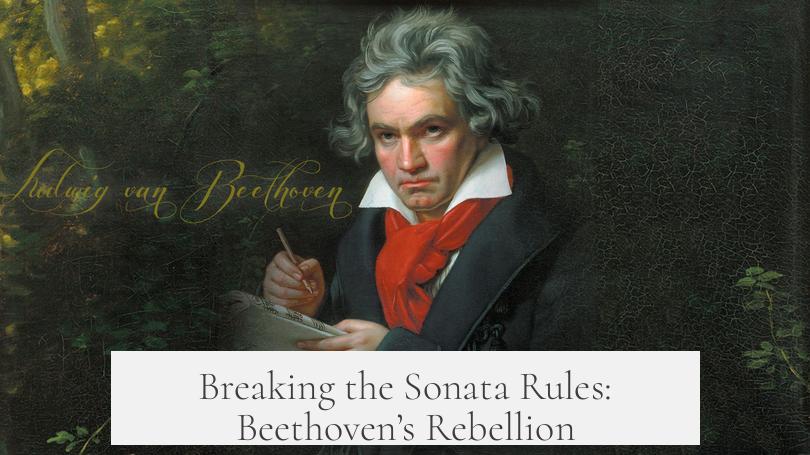
Beethoven was never one to follow the rules quietly. On the score, he marked the Moonlight Sonata as quasi una fantasia (almost a fantasy). What’s that about? A sonata usually follows strict, balanced forms. Beethoven? He flips the script.
He asked pianists to use the damper pedal for a lingering, resonant effect, creating a ghostly sound wash. This wasn’t your standard sonata. It hinted at a freer, more emotional style. The piece would wander not just in melody but in structure. This “almost a fantasy” label tells us: expect the unexpected.
The Woman Behind the Music: Julie Guicciardi
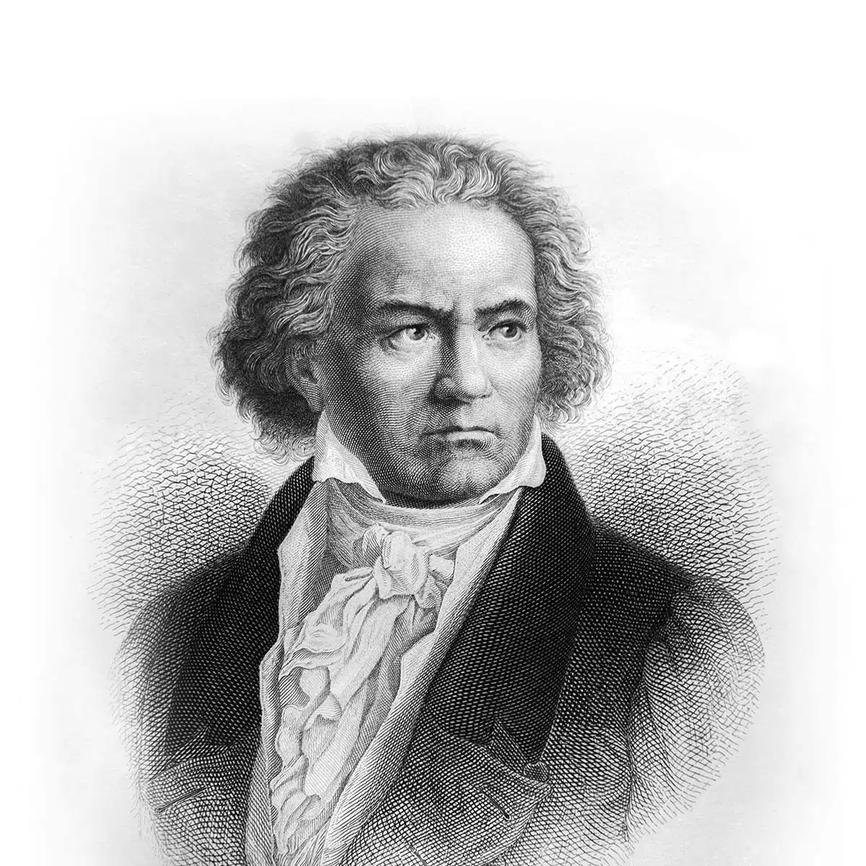
Could love have been the spark? Maybe. Beethoven dedicated this sonata to Julie Guicciardi, his piano student. A 16-year-old Austrian countess and a social class above our dear Ludwig.
The story goes that Beethoven admired her deeply. He described her affectionately in letters, calling her “sweet” and “enchanting.” Still, he felt stuck by their social divide:
“I feel that marriage could make me happy, but unfortunately she is not of my station — and now — I certainly could not marry now.”
So was this sonata a love letter? Possibly. But maybe not the dramatic heartbreak story you expect.
Romantic Rumors: Fiction or Fact?
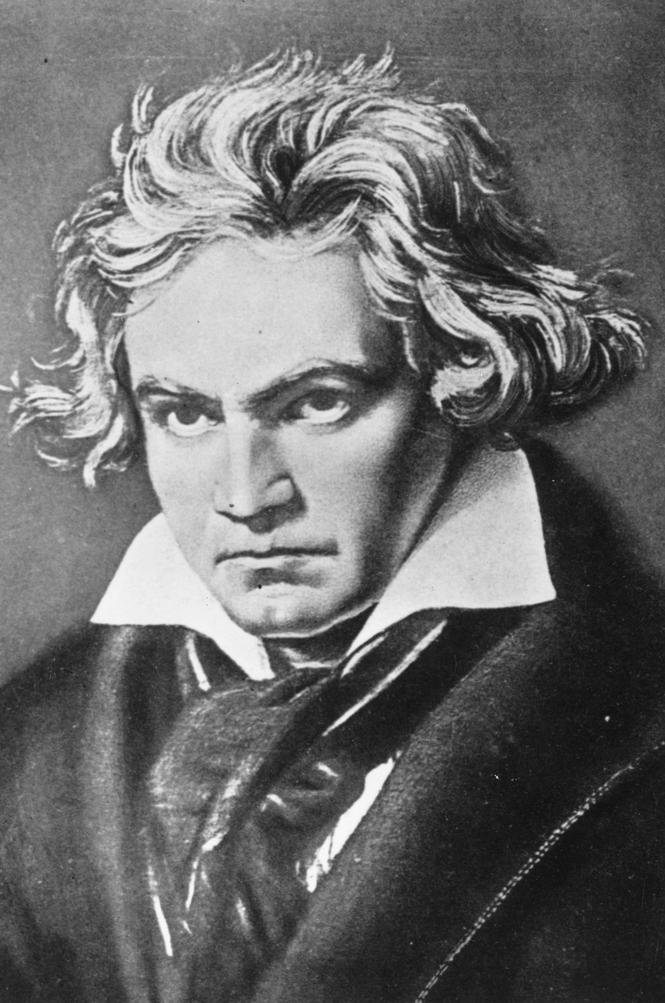
Later biographers added spicy details. Anton Schindler, Beethoven’s self-appointed chronicler, claimed Beethoven was madly in love with Julie and wrote a famous, mysterious love letter to her. Drama! But—hold up—this letter appeared nearly a decade after the sonata was composed.
Historians today think this romantic tale is more myth than fact—Schindler wasn’t exactly the most reliable source, known for tweaking stories to add flair.
In reality, Beethoven probably planned to dedicate another work to Julie but had already promised that dedication elsewhere. So he picked Moonlight Sonata for her instead. No epic parting heartbreak, just a respectful dedication.
Not Just Julie: Other Loves and Letters
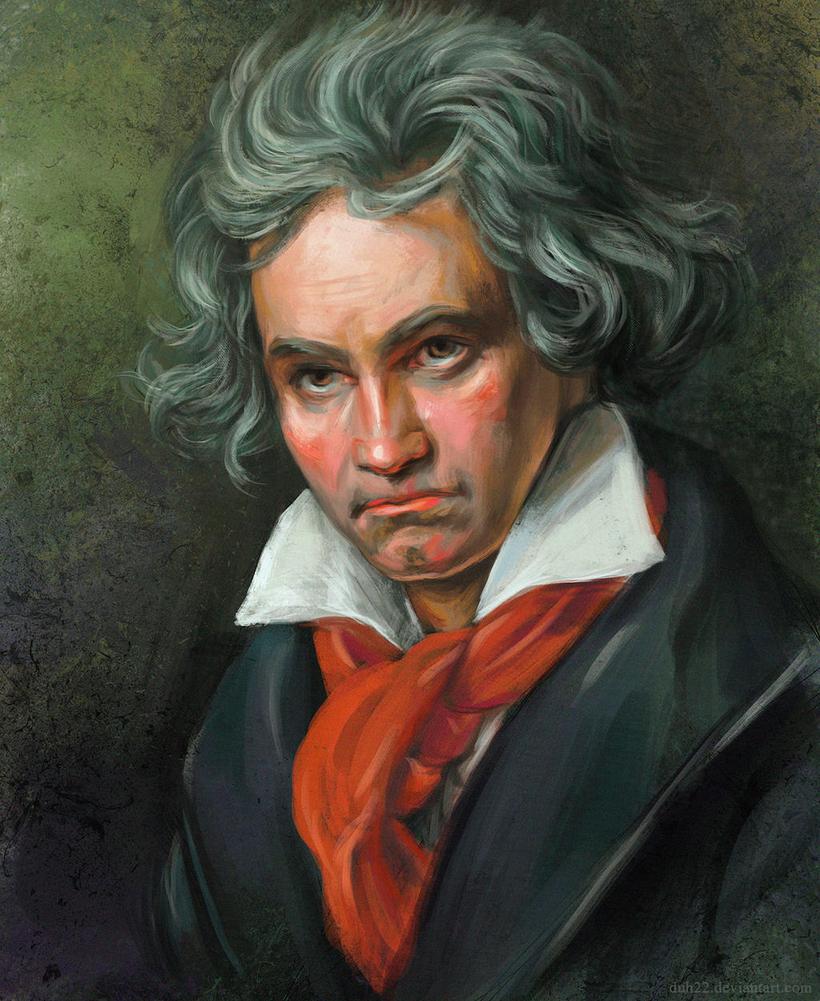
Julie wasn’t the only countess in Beethoven’s orbit. Before her, Beethoven had a connection with her cousin, Josephine Brunsvik. They exchanged letters, and Beethoven might have harbored feelings for her too, but she eventually married a count.
So, Beethoven’s love life was a bit tangled, with noble-class romances probably doomed by social norms. But these relationships were part of the emotional landscape that colored his music and life.
Beethoven’s Life at the Time of Composition
In 1801, when Beethoven composed the Moonlight Sonata, his career was on a roll. People saw him as a prolific composer with a bright future, eager to hear what he’d do next. He was also a celebrated performer in Vienna, known for his passionate playing style.
Sound like a guy weighed down by heartbreak or doom? Not exactly. Though Beethoven was starting to sense problems with his hearing—a looming shadow that would grow darker—this wasn’t yet casting a pall over his music. His famous Heiligenstadt Testament, a heartfelt letter about his growing deafness, was penned years later.
Why the Moonlight Sonata Still Captivates
So what inspired this blend of poetic mystery, innovative form, and potential unrequited love? Beethoven himself gave us clues: a willingness to break musical rules, emotional depth, and personal dedication. This piece challenges norms and stirs emotions without spelling everything out.
Next time the haunting first notes of the Moonlight Sonata drift through your ears, remember it’s not a simple love song or a tragic confession. It’s a masterclass in musical invention, a hint of youthful admiration, and a glimpse into the heart of a genius on the edge of hearing silence but still filled with sound.
Curious—what do YOU imagine Beethoven was thinking while composing? Was he gazing at a moonlit lake, remembering Julie, or just having a brilliant day tinkering on the piano? Share your theories or favorite interpretations—music invites all sorts of stories.
